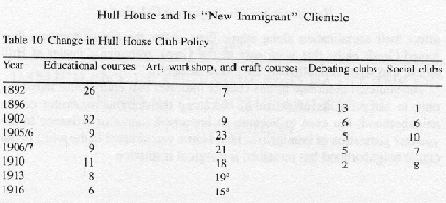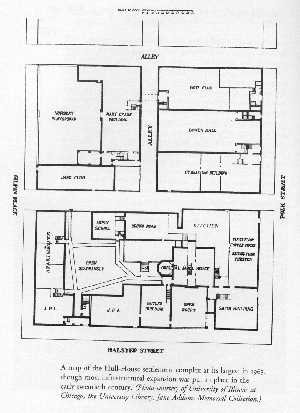Any company or organization pays close attention to its physical and social infrastructures. Addams and Starr rented a mansion and decorated it accordingly. The beautiful interior contrasted with the one room tenement homes where local immigrants resided and gave them an opportunity to see what they should aspire for in life. Hull-House became a salon in the slum, so label by one historian. Spacial participation, those in differing social stratisphere living together, was central to the Addams philosophy of regeneration. The settlement differed in method from other philanthropic efforts of the time in that its reformers moved into the neighborhoods they sought to help. Hull-House gave not only special attention to the actual physical infrastructure but the human infrastructure inside its walls. Programs were carefully planned and jobs delineated. Building upon its research and development, Hull-House composed ethnic clubs.
Physical Infrastructure
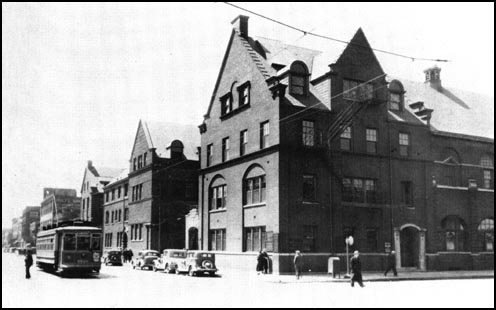 Without the actual Hull building, "Hull-House" and all the accomplishments that the name embodies would not exist. When a young resident was asked to give a day in the life at Hull-House, she began with a physical description of the house itself, showing the importance of the building itself. Alice Hamilton responded delightly to Hull-House's "long drawing room, carved white marble mantelpieces, and lofty ceilings"
(Jackson,154). The house also known for its "wooden pillars of exceptionally pure Corinthian design...boasting an architectural pedigree recognizable to a trained eye" (Jackson,154). The settlement came to include the entire city block, filling nearly every corner of Halsted, encompassing an art museum and a gym. Hull-House represented a paradox while it sought to live "in" the slums of Chicago but was visually "out" of place.
Without the actual Hull building, "Hull-House" and all the accomplishments that the name embodies would not exist. When a young resident was asked to give a day in the life at Hull-House, she began with a physical description of the house itself, showing the importance of the building itself. Alice Hamilton responded delightly to Hull-House's "long drawing room, carved white marble mantelpieces, and lofty ceilings"
(Jackson,154). The house also known for its "wooden pillars of exceptionally pure Corinthian design...boasting an architectural pedigree recognizable to a trained eye" (Jackson,154). The settlement came to include the entire city block, filling nearly every corner of Halsted, encompassing an art museum and a gym. Hull-House represented a paradox while it sought to live "in" the slums of Chicago but was visually "out" of place.
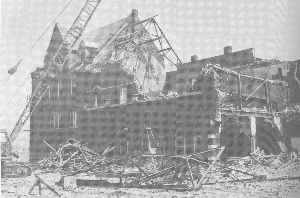
The end of Hull-House came with the destruction of its buildings. When the Univesity of Illinois was looking for space to expand, it sought the land Hull-House occupied. The fight was intense, going all the way to the Illinois Supreme Court. In the 1960's, the Richard Daley administration equated urban renewal with urban destruction.
Hull-House is now just a re-creation. In an attempt to "keep it alive," exact measurements were taken and a replica was built. But an empty shell remains, soley for the purpose of honoring a memory. Even though many Hull-House programs remain, the uniqueness of sheltering together in a home is gone.
Social Infrastructure
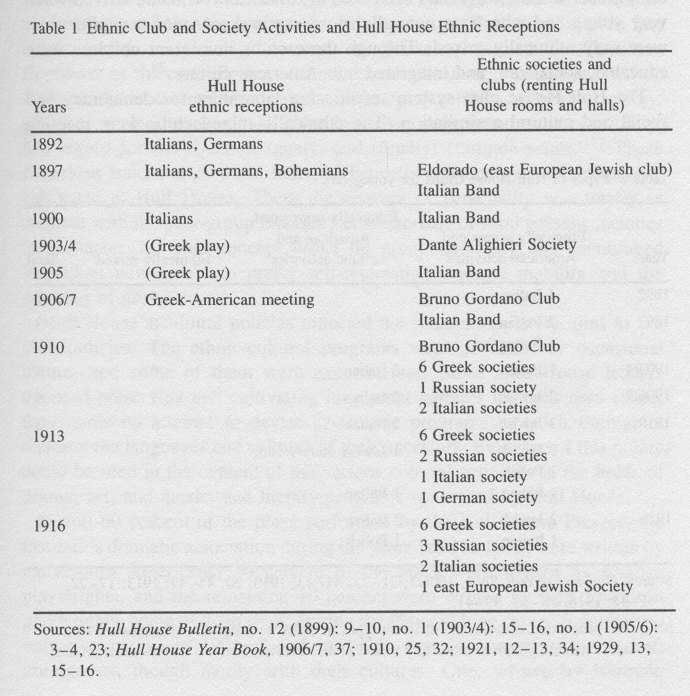 The buildings contained carefully planned programs. The people of Hull-House needed structuring and restructuring too. The programs composed were organized in a top down method based on research. Varying ethnic clubs were created based on the neighboring ethnic composition. Hull-House met with varying success depending on cultural expectations.
Criticism has been levied toward the fact that Hull-House leadership roles were allocated to white middle-class people not to the surrounding neighbors (Stebner,24). For all of its socialist leanings, blacks were not always warmly welcomed at Hull-House, whose presence some felt would discourage other ethnic groups from coming.
The buildings contained carefully planned programs. The people of Hull-House needed structuring and restructuring too. The programs composed were organized in a top down method based on research. Varying ethnic clubs were created based on the neighboring ethnic composition. Hull-House met with varying success depending on cultural expectations.
Criticism has been levied toward the fact that Hull-House leadership roles were allocated to white middle-class people not to the surrounding neighbors (Stebner,24). For all of its socialist leanings, blacks were not always warmly welcomed at Hull-House, whose presence some felt would discourage other ethnic groups from coming.
Hull-House, ultimately, was not an immigrant institution in that it represented a pluralistic cultural view of society. Hull-House sought to assimilate individual newcomers into the American way.
